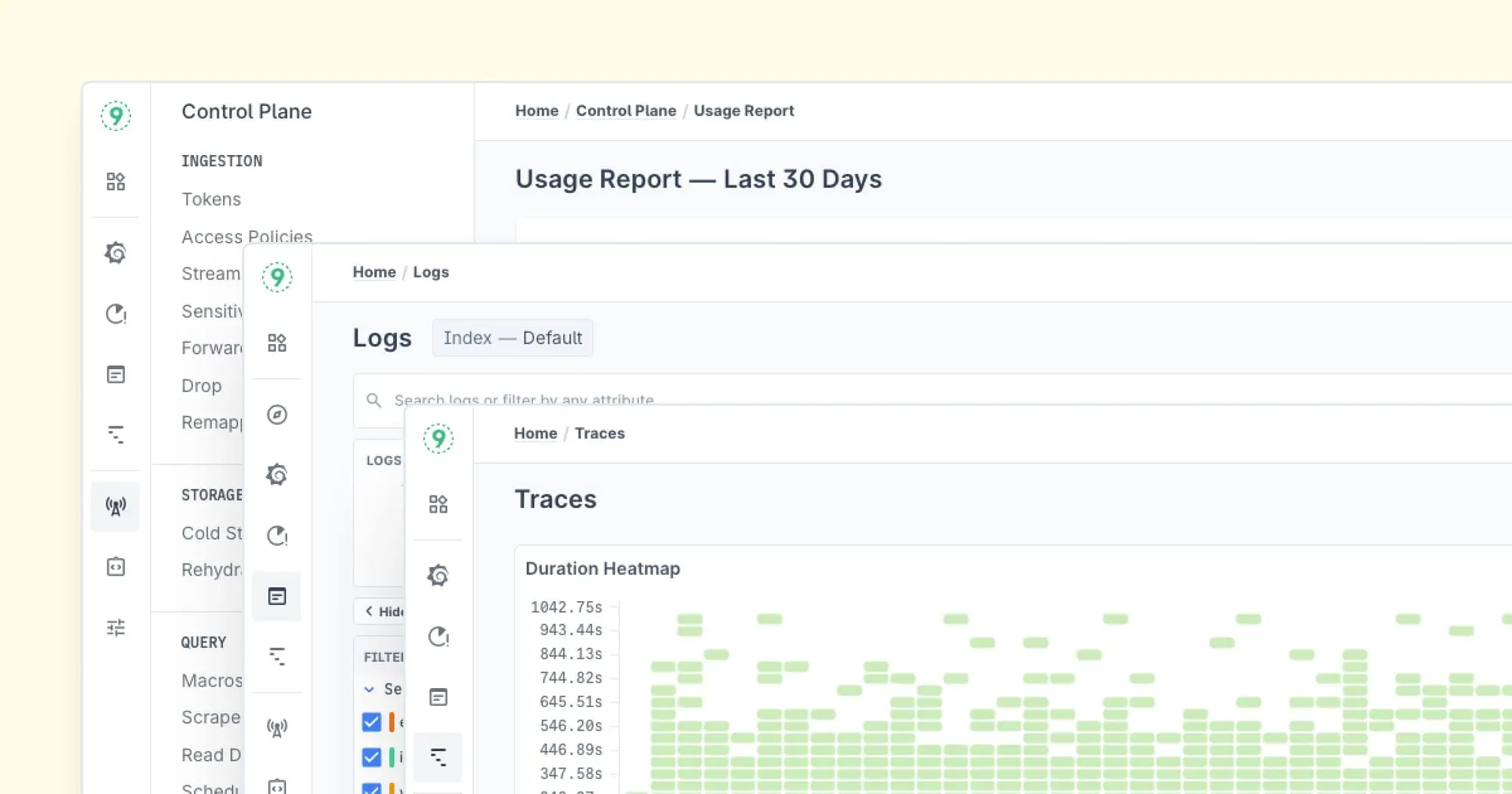Observability isn’t just a nice-to-have—it’s essential. OpenTelemetry steps in as a unified framework that helps you collect, process, and export telemetry data across distributed systems.
The OpenTelemetry Collector Contrib extends this framework, offering extra components that make it even more powerful and flexible, helping developers and operators monitor and optimize systems with ease.
What is OpenTelemetry Collector Contrib?
OpenTelemetry Collector Contrib is an open-source project that enhances the capabilities of the OpenTelemetry Collector. It adds extra receivers, exporters, processors, and extensions that aren't part of the core Collector but are useful for managing telemetry data in different environments.
These contributions cater to users who need extra functionality or specific integrations beyond the core features.
While the core OpenTelemetry Collector is already highly customizable and supports a wide range of use cases, the Contrib version expands that flexibility even further. It offers additional components to tackle unique use cases or integrate with third-party systems and tools.
Key Components of OpenTelemetry Collector Contrib

Receivers
These components collect telemetry data from various sources. Contrib provides a broader selection of receivers compared to the base version, making it easier to integrate with a wide variety of systems.
Whether you're dealing with metrics, traces, logs, or other data formats, Contrib offers specialized receivers to handle it all.
Processors
Once data is collected, it often needs processing to make it ready for storage, visualization, or analysis. OpenTelemetry Collector Contrib adds more processors, enabling advanced data manipulations like sampling, batch processing, or aggregations. These features help reduce overhead and improve performance.
Exporters
The data processed by OpenTelemetry can be exported to different backends for analysis, visualization, or storage. OpenTelemetry Collector Contrib expands the core exporter capabilities, allowing you to send data to systems like Prometheus, Last9, and more.

This flexibility ensures your observability pipeline can be tailored to fit your existing tech stack.
Extensions
Extensions in the OpenTelemetry Collector Contrib enhance its functionality with features like authentication, data enrichment, or integrations with monitoring tools. These extensions cater to niche use cases, providing added security or performance optimizations.
Why Choose OpenTelemetry Collector Contrib?
While the core OpenTelemetry Collector is great for basic telemetry needs, the Contrib version offers several advantages that make it essential for modern observability:
1. Customization
Every organization’s observability needs are unique. The OpenTelemetry Collector Contrib provides a wide range of components that let you customize your telemetry pipeline.
You can select the components that best suit your needs, making it easier to build a monitoring solution that fits your environment.
2. Extended Integrations
Many organizations use a mix of monitoring tools and observability platforms. The Contrib project includes extended integrations that let you connect OpenTelemetry with third-party tools and services.
This broadens OpenTelemetry’s use cases, allowing you to integrate it with other observability platforms like Prometheus, Grafana, Last9, and more.
3. Community Support
OpenTelemetry is backed by a large and active community of developers and contributors. The Contrib version is an open-source project with continuous contributions from the community.
This means you're not relying on just a few maintainers, but a broad network of professionals who are actively improving the project.
4. Easier Adoption
The additional components in OpenTelemetry Collector Contrib make it easier to adopt OpenTelemetry in your organization.
If you're transitioning from a legacy system, you can integrate OpenTelemetry with minimal effort by using the prebuilt components offered by Contrib. This saves you time and complexity compared to developing custom integrations.
How to Get Started with OpenTelemetry Collector Contrib
Getting started with OpenTelemetry Collector Contrib is easy, and there are several ways to deploy it in your environment. Here’s how you can quickly get up and running:
Installation
Installing the OpenTelemetry Collector Contrib is simple. You can use Docker, Kubernetes, or build it from source.
The official OpenTelemetry documentation provides clear and structured installation guides, walking you through each step. For Docker, you can use the following command to install:
docker run --rm -p 55678:55678 -p 4317:4317 \
-v /path/to/config.yaml:/etc/otelcol/config.yaml \
otel/opentelemetry-collector-contrib:latestThis will start the OpenTelemetry Collector Contrib container and expose the necessary ports.
Configuration
Once installed, configuring the collector is a straightforward process. You'll modify the configuration files to specify which receivers, processors, exporters, and extensions to use.
Here’s an example snippet for setting up a basic receiver, processor, and exporter in the otelcol-config.yaml configuration file:
receivers:
jaeger:
protocols:
grpc:
processors:
batch:
exporters:
logging:
loglevel: debug
service:
pipelines:
traces:
receivers: [jaeger]
processors: [batch]
exporters: [logging]This configuration sets up a Jaeger receiver, a batch processor, and a logging exporter that outputs trace data for debugging purposes.
Integration
After configuring the collector, it’s time to integrate it with your observability backends and start collecting telemetry data from your services. Whether you’re using Prometheus, Jaeger, or another system, you can easily connect the collector with your existing tech stack.
Here’s an example of how to integrate with Prometheus by adding an exporter to your configuration:
exporters:
prometheus:
endpoint: "0.0.0.0:8889"
service:
pipelines:
metrics:
receivers: [prometheus]
exporters: [prometheus]This will allow the collector to scrape metrics from your services and expose them for Prometheus to scrape.
How to Contribute to the OpenTelemetry Collector Contrib Project
If you're interested in contributing to the OpenTelemetry Collector Contrib project, here’s a simple guide to help you get started:
Fork the Repository
First, fork the project to your own GitHub account. This way, you can work on your changes without affecting the original code.
Create a Branch
Before jumping into coding, create a new branch for the feature or bugfix you're working on. This keeps things organized and makes merging easier later on.
Write Tests
Try to add tests whenever possible to verify your changes. This helps keep things stable and makes sure future contributions don’t accidentally introduce bugs.
Follow Code Style
Stick to the project’s coding conventions and formatting rules. It keeps the code readable and consistent for everyone. If you’re unsure, check out the project’s style guide or look at the existing code for examples.
Commit Messages
Write clear and concise commit messages. A good message explains what you changed and why, so reviewers can understand your work quickly.
Open a Pull Request
Once you're done with your changes, push them to your fork and open a pull request (PR) against the main branch. Make sure to describe what your PR does and why it’s needed.
Address Feedback
After submitting your PR, you might get some feedback from maintainers or other contributors. Be open to suggestions, and ask questions if anything is unclear.
Respect the Code of Conduct
Make sure the project is a welcoming space for everyone. Be respectful and kind in your interactions with others.
What You Need to Know About Gated Features
In some cases, certain features in the OpenTelemetry Collector Contrib project are gated. This means they aren’t enabled by default and may require extra steps to activate or use them.
Gated features are often experimental, under development, or meant for specific use cases.
Here's what you need to know to access and use them:
Feature Flags
Gated features are typically controlled through feature flags. These flags let you enable or disable specific features at runtime, offering flexibility without changing the core code. To access a gated feature, you'll generally need to set a configuration flag in your otel-collector-config.yaml file.
Enable in Configuration
To use a gated feature, you’ll need to enable it explicitly in the collector’s configuration. This is often done by modifying the config file to include the necessary settings or by passing specific flags when running the collector. Always check the documentation for the exact flag or setting needed.
Limitations and Use Cases
Gated features may not be as stable or fully supported as default features. It’s important to review any warnings or limitations in the documentation before enabling them. These features might still be in heavy development or testing, so they may not be suitable for production environments just yet.
Feedback and Issues
Since gated features are often experimental, providing feedback is key. If you run into issues or have suggestions, report them. Your input can help speed up the development and stabilization of these features.
Future Availability
Some gated features may eventually become part of the default functionality in future releases if they prove stable and are widely adopted. Keep an eye on release notes to see when these features become generally available.
What are the Stability Levels
In the OpenTelemetry Collector Contrib project, components (like receivers, processors, exporters, and extensions) are categorized based on their stability levels. These levels help you understand the maturity and reliability of each component.
Here’s a breakdown of what to expect:
Alpha
What it means:
Alpha components are in the early stages of development. They’re not fully stable and might undergo major changes.
When to use it:
Alpha components are great for testing and experimentation. They may have limited functionality and could break with updates, so be ready to provide feedback and handle potential instability.
Beta
What it means:
Beta components are more developed than alpha, but they’re still being actively improved. Core functionality is stable, but API changes or minor issues may still pop up.
When to use it:
Beta components are better for testing in real-world scenarios. While they’re more stable, occasional updates or bug fixes might occur. Make sure you’re okay with that before using them in your environment.
Stable
What it means:
Stable components are production-ready and fully supported. They’ve been thoroughly tested, with minimal changes to their APIs.
When to use it:
Stable components are safe for production use. They’re reliable and tested for long-term deployment, though minor patches or enhancements may still be released.
Deprecated
What it means:
Deprecated components are no longer actively maintained or supported. They might be removed or replaced in future releases.
When to use it:
If you’re using a deprecated component, it’s time to start planning a migration to a more current or supported option. These components may still work for now but aren’t recommended for new deployments.
Testing and Documentation Details
To ensure the OpenTelemetry Collector Contrib project remains high-quality and reliable, thorough testing and clear documentation are key.
Here’s an overview of the practices for both:
Testing Procedures
Unit Tests
Unit tests check that individual components, like receivers, processors, and exporters, work as expected in isolation. Contributors are encouraged to write unit tests for code changes to catch issues early and keep the codebase robust.
Integration Tests
Integration tests verify that components function together across different configurations. These tests are crucial for ensuring that the OpenTelemetry Collector works properly as a whole, from data collection to exporting.
End-to-End Tests
End-to-end tests ensure that telemetry data flows smoothly through the entire process. They validate that the collector processes and exports data as expected, even under real-world conditions.
Test Coverage
Contributions should aim for high test coverage, especially for new features or bug fixes. This helps prevent regressions and ensures the stability of the codebase. Tools and guidelines are available to help contributors measure and improve test coverage.
Continuous Integration (CI)
The CI pipeline automatically runs tests when changes are made, catching errors early and ensuring the code is always in a testable, deployable state. Contributions are expected to pass all CI checks before being merged.
Code Quality Checks
In addition to functional tests, contributors should ensure their code adheres to quality standards, like formatting and linting rules. This keeps the codebase clean and consistent.
Documentation Practices
Comprehensive Documentation
Clear documentation is essential for making the OpenTelemetry Collector easy to understand and use. Every new feature, change, or bug fix should be accompanied by updates to the documentation.
User Documentation
User documentation includes guides for setup, configuration examples, and troubleshooting tips. It helps users integrate the OpenTelemetry Collector into their systems and effectively use its features. All new components or major changes should include clear usage instructions.
Developer Documentation
Developer documentation is for those looking to contribute or understand the codebase. It should provide information on the project’s structure, contribution guidelines, and testing procedures, making it easy for new contributors to get started.
Changelog
The changelog keeps track of new releases, bug fixes, and major updates. It helps users follow changes between versions and gives developers a record of the project’s history.
Inline Code Documentation
Inline comments help developers understand the code. Clear and helpful comments should be written, especially in complex code areas, to explain decisions and make future maintenance easier.
Readme and Quickstart Guides
The Readme file is the first stop for new users, offering an overview, installation instructions, and basic usage guides. A clear, concise quickstart guide is especially important to get users up and running quickly.
Maximizing OpenTelemetry Collector Contrib's Potential
One standout feature of OpenTelemetry Collector Contrib is its expanding ecosystem of extensions. These extensions let you add specialized functionality, such as rate limiting, monitoring resource usage, or implementing enhanced security measures like encrypted communication.
It's not just about adding more features; these extensions focus on solving real-world challenges that modern organizations face with observability in complex cloud-native environments.
For example, Contrib’s integration with service meshes like Istio lets you capture telemetry data directly from the mesh, eliminating the need to configure individual service endpoints. This is a game-changer for microservices architectures, where managing observability across services can otherwise feel like a major headache.
Conclusion
OpenTelemetry Collector Contrib is essential for improving observability in cloud-native systems. It offers flexibility, scalability, and customization, with integrations and processors that simplify monitoring complex, distributed applications.
If you want better visibility into your systems, OpenTelemetry Collector Contrib is a powerful, evolving tool, backed by an active community and open-source development.



